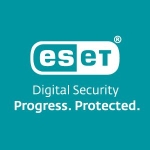As a specialist in SOC, we work closely with multiple customers to cover their IT assets using Microsoft 365 Defender. They have Microsoft Defender for Endpoint deployment, especially for Microsoft 365. We configure the tool to implement the different policies and requirements to cover the email security part and the cloud apps part with the different strategies available on the platform.
After that, we either work directly on the Microsoft 365 portal or configure the sending of the alerts from this portal to Microsoft Sentinel. This will act as a single pane of glass for us to follow the incidents and advise our customers based on that.
One of the best features of the tool is its capability to aggregate insights from different workloads, basically from the Office 365 and endpoints part. With the integration of Microsoft Defender for Identity and Microsoft Entra ID Protection, we will have insights from the identity part. Finally, with the Microsoft Defender for Cloud Apps, we'll also have insights about our cloud apps, either Microsoft 365 cloud apps or third-party cloud apps.
The aggregation of all of these insights into the tool's incident feature will help us have a global vision of the incidents and find multistage attacks at the first steps of the attacks.
Microsoft Defender for Cloud Apps is a very good solution that allows you to use a single port or tool to control everything happening with your organization's different cloud applications.
Configuring the default strategies and policies in Microsoft Defender for Cloud Apps generates a lot of noise and false positives. Also, the documentation does not have many details about that. The bad configuration and lack of good documentation prevent professionals from taking the most advantage of this tool.
One of the big problems that some customers face is that Microsoft always changes its products' names. For example, four to six months ago, Microsoft Defender for Office 365 was renamed Microsoft Defender XDR. Microsoft comes up with a new name for the tool every one or two years, which sometimes is hard for customers to follow.
Microsoft should improve some integrations in the Microsoft Defender for Cloud Apps sub-category. With a specific configuration to Microsoft Defender for Endpoint, we can get logs and insights from network devices and other workloads on our system.
We configure the tool for different clients, and thousands of people work with the solution. The tool scales out very well and can cover and monitor devices and users ranging from a few hundred to thousands without any problem. Our clients for Microsoft Defender for Office 365 are medium and small businesses. Microsoft Defender for Office 365 is a scalable solution. There are no issues with the solution's scalability or latency.
I rate the solution's scalability ten out of ten.
I have previously used CrowdStrike Falcon. Microsoft Defender for Office 365 and CrowdStrike Falcon are both great tools. Each has its advantages and disadvantages. In my opinion, CrowdStrike is more mature in the endpoint and classic antivirus parts. On the other hand, Microsoft Defender for Office 365 is more mature regarding identity and Office 365.
For artificial intelligence integration, Microsoft 365 Defender is far ahead of others with the integration of CoPilot within the portal. This feature that helps analysts reduce time to analyze and respond to incidents does not exist in CrowdStrike.
The solution's initial setup is very straightforward. You have to go to the portal and click on the incident icon, and the tool will automatically start configuring itself. After that, the integration of the endpoints depends on your workload. For example, 1,000 devices will take much longer than two or three devices.
Automation tools are available within the platform to help us automatically deploy the sensors on different workloads that we will need to cover with this tool. The solution's initial configuration and deployment are very straightforward. A lot of videos and documentation are available for the same.
The initial configuration and deployment of the tool for a specific tenant takes five to ten minutes. After that, it depends on what you want to do. You can implement specific strategies today. Based on the evolution of threats, you will need to configure different things tomorrow.
We tried to solve a lot of issues by implementing the solution. The solution helps us detect problems related to the endpoints, like the detection of suspicious processes or suspicious installation of suspicious software. We will raise an alert, and it will show us a graph of the different entities included in the incident, including users, computers, or endpoints.
If it is related to email, it will show us the initial email and different insights about the incident. We'll go through those alerts and try to check them manually. Sometimes, the tool detects suspicious emails for some incidents and automatically quarantines them.
After that, we, as analysts, will do the manual review. If we find an action suspicious, we use the tool to blocklist the domain that has sent the email. If we find that it's a false positive, we will reject this automatic action by the XDR, and the email will be delivered to the end user.
Unified identity and access management is a new feature on the Microsoft 365 Defender portal. It's all about having a single pane of glass to give you insights into the different identities available on your tenant. Those identities are either on-premises, cloud-based, or synchronized between the on-premises and cloud-based workloads.
The solution's security covers more than just Microsoft technologies. Microsoft Defender for Endpoint and Microsoft Defender for Cloud Apps have a specific configuration to get insights from third-party cloud applications or from within the Microsoft Defender for Endpoint sensors. We can also get logs and insights from other network devices present in our perimeter, like routers, switches, or firewalls. All those insights will help us gain some visibility into our security posture.
The product has gone through a lot of improvements, especially in the last few moments. It will be like a SOC unified platform with the integration of the Microsoft Sentinel tool within the Microsoft 365 Defender portal. This tool is available to cover all the perimeters. Even third-party solutions and workloads that do not have any security tools from where we can get insights, we can directly use something else to install the low connectors and get visibility about those.
Also, the most significant evolution is the integration of artificial intelligence with Microsoft Copilot for security. This is also a big added value that will help analysts investigate and minimize the meantime needed to respond to advanced threats.
The solution stops the lateral movement of advanced attacks, like ransomware or business email compromise, in a good way. Specific measures and configurations are implemented within the tool that will help us detect advanced attacks in the early stages. We can set configurations for business email compromise.
With the help of artificial intelligence, we'll get insights about emails that may be starting a business email compromise based on specific keywords. It's the same for ransomware and other advanced attacks.
The solution's integration into a company will help it be more resilient to cyber attacks. It will help the company prepare for attacks at an early stage and respond quickly, which will help it be more secure.
Being an XDR, the solution has detection and response capabilities. With adequate configuration, we can configure the required measures to stop or at least quarantine attacks and isolate the assets involved with the attacks in the early stage upon detection. After that, the manual site comes into the picture, and we do the manual review. Based on our review and feedback, the tool will learn from us and behave better in the next similar incident.
I saw a demo about the solution's multi-tenant management feature, and it's a very good feature. It will help big companies with multiple tenants and MSSPs that deal with multiple tenants for users. It will help them to work with multiple tenants by flipping a switch.
I'm a big fan of the solution. Having a Microsoft E5 license will help you to cover all the different types of security, including the identity, the endpoint, the email, and even the cloud. I'm just an engineer and work with whatever tool the client provides me. I noticed that many customers have a Microsoft E5 license, but they don't know a lot about the capabilities that come with it.
They buy or add other tools from third parties when they have that feature or capability included within the E5 license. Microsoft needs to talk to different customers and show them the capabilities that come with these types of licenses, which cover a lot of features.
The integration of Copilot has helped us a lot in concentrating on a single portal to get different insights. This will help a lot to reduce the meantime to respond to incidents by 50%.
The configuration of the Copilot assistant is very straightforward and doesn't take more than 30 minutes. After that, when the tool automatically detects incidents and you go to the analysis page of a specific incident, you will find an initial analysis of the whole incident by the Copilot security assistant.
You may also interact with it using chat, and it will help you if you haven't understood any specific terms from the initial analysis. It can be configured to automatically respond to specific incidents based on workbooks, which will help us automatically apply the measures to respond to specific incidents for remediation.
Microsoft Defender for Office 365 is a cloud-based solution. Since it's a cloud-based solution, Microsoft does all the maintenance for the tool. We are notified via email if there is a shortage or a problem. The SLAs are usually very good, and I have not noticed any problems in the last two years where we could not access the tool.
I would recommend the solution to other users because it's a very good solution and one of the best XDRs in the world right now. If you go through reviews from Gartner or other companies, you will see that Microsoft Defender for Office 365 is a leader in the XDR market. It has the capability to collect and aggregate insights from different sources, either cloud-based or on-premises.
The integration of artificial intelligence will greatly help final users and security practitioners respond to incidents adequately and efficiently.
Overall, I rate the solution an eight out of ten.















